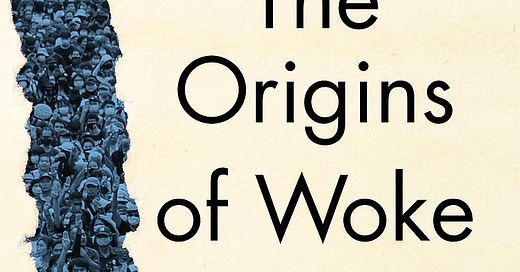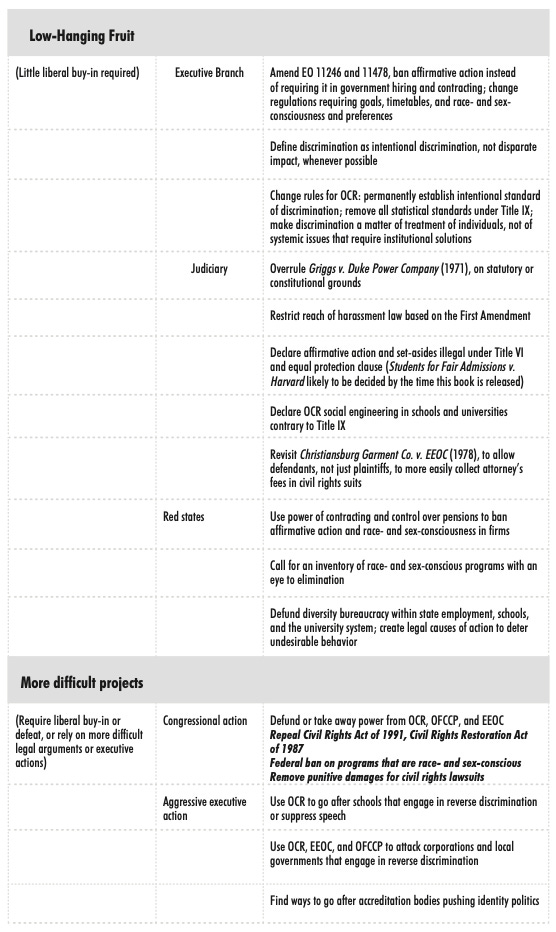Origins of Woke (Law): Book Review
Introduction
Richard Hanania was kind enough to gift me an early copy of his new book, The Origins of Woke, which was recently released that (as its title implies) discusses how Wokeness manifested in America and what we can actually do about it. I enjoyed reading the book and hope some of you will consider checking it out.
Wokeness is an ideology that attracts a lot of criticism - much of which is warranted. That said, I believe the “Anti-Woke” crowd leaves much to be desired regarding offering meaningful solutions. Without a clear path toward solving the problem, it is easy for pessimism to seep in and demoralize a movement.
Hanania is able to create one possible roadmap by identifying specific pieces of legislation that created the conditions in American society for Wokeness to flourish and by providing approaches for addressing them.
Pillars of Woke Law
It isn't easy to summarize Hanania’s work without being reductive, but, for the sake of this post, I will focus on a few broad themes that reoccur throughout the book that essentially form the pillars of Woke Law which are as follows:
Affirmative Action
What is it? Affirmative Action is a system of demographic preferences most commonly revolving around race and sex.
How is it enforced? Through Executive Orders 11246 and 11478.
What can be done? Repeal aforementioned Executive Orders and place more concrete bans on demographic preferences. The Supreme Court recently ruled against such types of preferences which will help provide some legal ammo through precedent.
Disparate Impact
What is it? Disparate Impact can be thought of as a legal doctrine that arbitrarily conflates discrimination and disparities - therefore, any disparity (even if it is caused by factors other than discrimination), will be attributed to discrimination.
How is it enforced? Through legal precedents set through Supreme Court cases like Griggs v. Duke Power Company (1971).
What can be done? Overturn the aforementioned legal precedents and more precisely define what “discrimination” is in the context of Civil Rights Law.
Harassment Law
What is it? A claim that making certain demographics (typically women and minorities) uncomfortable is a violation of Title VII (Equal Employment Opportunity) and thus necessitates measures as extreme as silencing free speech. Corporate efforts to mitigate risk in this area have resulted in a massive human resources bureaucracy. Title IX has further spread the tendrils of policies Harassment Law into the universities.
What can be done? Emphasize legal contradictions within the enforcement mechanisms and codify protections using the First Amendment as precedent.
Classic Civil Rights
“I have a dream that my four little children will one day live in a nation where they will not be judged by the color of their skin, but by the content of their character.”
— Martin Luther King Jr.
It should be emphasized that the vision driving the Civil Rights Act of 1964 did not intend for demographics to be viewed differently under the law; in addition to the above excerpt from MLK, a couple of quotes from then-senator Hubert Humphrey support this:
“Title VII prohibits discrimination. In effect, it says that race, religion, and national origin are not to be used as the basis for hiring and firing.”
“If the senator can find in Title VII [of the Civil Rights Act of 1964]… any language which provides that an employer will have to hire on the basis of percentage or quota related to color, race, religion, or national origin, I will start eating the pages one after another, because it is not there.”
The legislation itself states:
Nothing contained in this title shall be interpreted to require any [employer or labor union] to grant preferential treatment to any individual or to any group because of the race, color, religion, sex, or national ori- gin of such individual or group on account of an imbalance which may exist
Woke Law
Collectively, the way the Pillars of Wokeness have been interpreted and enforced over the decades has perverted the intentions of classic Civil Rights Law to the point referring to them as “Woke Law” might be more appropriate. Why am I focusing on branding? Because it has been shown, such as with polling on Affirmative Action, that branding matters - in other words, the way an issue is marketed factors into how it is perceived. Therefore, I am proposing the Pillars of Wokeness we have discussed be more concisely referred to as “Woke Law.” Speaking truthfully and plainly what these policies do is one simple way to help roll back Woke Law.
Conclusion
Despite the intentions of the Civil Rights Act of 1964, its original vision of colorblind status under the law has been subverted by Woke Law which makes every disparity a form of discrimination, incentivizes government and corporations to engage in aggressive social engineering practices through policies like affirmative action, has kickstarted a massive Human Resources Industry, and has invited the government into the bedroom to regulate people’s sex lives. Things do not have to be this way and Richard Hanania has given us a path forward in The Origins of Woke.
Appendix
In this section, I will include two tables from the book.
Table 1: Woke Doctrines
Table 2: Anti-Woke Agenda






